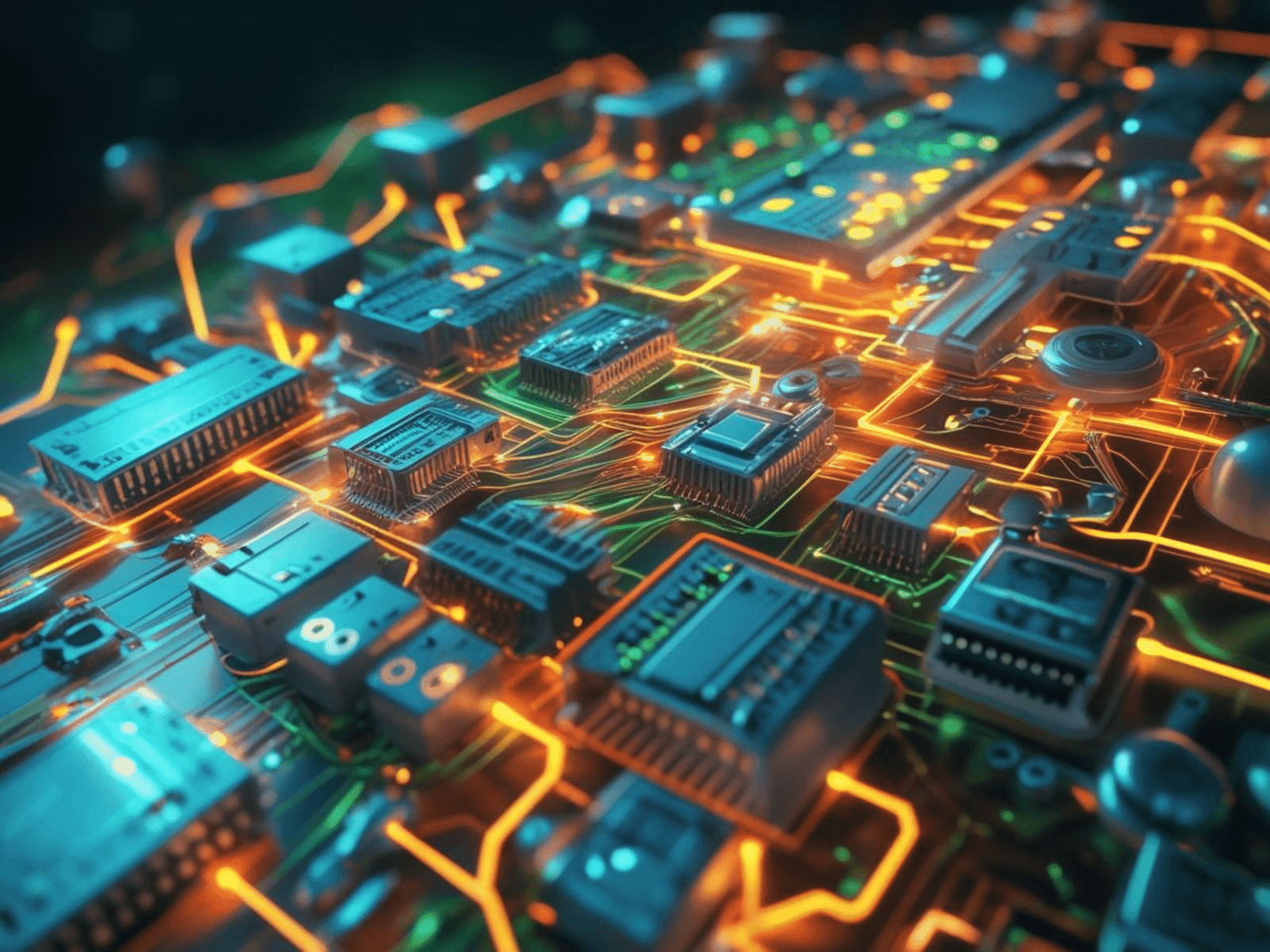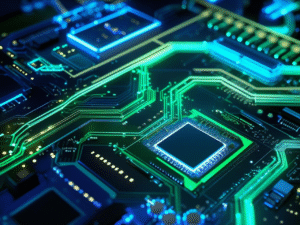Table of Contents
ToggleNetworking and Hardware
In today’s digital world, networking and hardware together form the foundation of almost every technological advancement. Whether it’s browsing the internet, streaming content, conducting financial transactions, or running large-scale enterprises, the synergy between networking systems and computer hardware ensures smooth and efficient operations.
Understanding Networking
Networking refers to the practice of connecting multiple computing devices so they can share information, resources, and services. A network may be as small as a local home setup with two or three devices (LAN – Local Area Network) or as large as the global internet (WAN – Wide Area Network).
Key components of networking include:
Routers and Switches
Devices that direct data traffic between computers and networks.
Cables and Wireless Connections
The medium through which data travels, whether physical (Ethernet cables, fiber optics) or wireless (Wi-Fi, Bluetooth, 5G).
Protocols
Rules like TCP/IP that ensure reliable communication between devices.
Servers and Clients
Servers provide services, such as web hosting or file storage, while clients (computers, smartphones) request and use those services.
Networking is crucial for communication, resource sharing, remote access, and the development of cloud computing, IoT (Internet of Things), and smart technologies.
Hardware: The Physical Core
Hardware refers to the tangible, physical components of a computer system. Unlike software, which is intangible and provides instructions, hardware executes tasks and enables computing.
Major categories of hardware include:
Input Devices
Keyboards, mice, scanners, and microphones used to feed data into systems.
Output Devices
Monitors, printers, and speakers that present processed information.
Storage Devices
Hard drives, SSDs, and external storage for data retention.
Processing Units
The CPU (Central Processing Unit) and GPU (Graphics Processing Unit) that handle computations and processing tasks.
Networking Hardware
Specialized devices like NICs (Network Interface Cards), modems, routers, and hubs that enable communication between machines.
Hardware provides the performance, speed, and reliability required to run networking systems and software applications.
The Interdependence of Networking and Hardware
Networking cannot exist without hardware. Every network relies on physical devices—routers, switches, servers, and cables—to function. Similarly, hardware today is largely designed with networking capabilities in mind. Even basic gadgets like smartphones and smart TVs rely heavily on internet connectivity.
Some modern examples of this interdependence include
Cloud Computing
A network of powerful hardware servers accessible via the internet.
Data Centers
Facilities packed with hardware infrastructure, ensuring global connectivity and data storage.
IoT Devices
Smart devices like thermostats, cameras, and wearables, which depend on both compact hardware and networking protocols.
Challenges and Future Trends
As networking and hardware evolve, they face challenges such as
Security
Protecting networks and hardware from cyber threats.
Scalability
Designing hardware that supports the growing demand for faster networks like 5G and beyond.
Sustainability
Managing electronic waste and reducing energy consumption in hardware manufacturing and usage.
Future trends are promising, with innovations such as quantum networking, AI-powered network management, and ultra-fast processors enabling seamless global communication.
Conclusion
Networking and hardware together act as the backbone of modern digital ecosystems. From personal computing to enterprise-level solutions, they ensure reliable connectivity, efficient processing, and seamless data exchange. As technology advances, the synergy between networking systems and hardware devices will continue to shape how we live, work, and communicate.
5G vs 6G: The Future of Wireless Connectivity
The evolution of mobile communication technologies has been nothing short of revolutionary. From the first generation (1G) analog voice calls to the blazing speed of 4G LTE, each generation has drastically changed how we connect and interact. Today, 5G is being rolled out across the globe, promising ultra-fast speeds, low latency, and massive device connectivity. However, the conversation is already shifting toward 6G, the next frontier in wireless communication expected to arrive around 2030.
This article explores the differences, potentials, and challenges of 5G and 6G, and how they will shape the future of digital society.
What is 5G?
5G (Fifth Generation of Wireless Technology) is the successor of 4G LTE. It aims to provide faster data speeds, reduced latency, and support for a larger number of devices simultaneously.
Key Features of 5G:
Speed: Up to 10 Gbps (about 100x faster than 4G).
Latency: As low as 1 millisecond.
Capacity: Can connect up to 1 million devices per square kilometer.
Applications
Smart cities, autonomous vehicles, virtual reality (VR), augmented reality (AR), telemedicine, and IoT (Internet of Things).
What is 6G?
6G (Sixth Generation of Wireless Technology) is still in the research and development stage, with deployment expected around 2030. It is not just an upgrade in speed but a complete reimagination of connectivity.
Key Features of 6G (Expected):
Speed: Up to 1 Tbps (100 times faster than 5G).
Latency: As low as 0.1 millisecond.
AI Integration: Built-in artificial intelligence to manage and optimize networks.
Holographic Communication: Real-time holograms for meetings, education, and entertainment.
Extended Coverage: Integration of satellite networks for global, seamless connectivity.
Applications
Smart robotics, brain-computer interfaces, immersive extended reality (XR), and space-based internet.
5G vs 6G: A Comparative Overview
Feature | 5G (Current) | 6G (Future) |
Launch Timeline | 2019 onwards | Expected around 2030 |
Peak Speed | ~10 Gbps | ~1 Tbps |
Latency | ~1 ms | ~0.1 ms |
Network Type | Terrestrial + IoT support | Hybrid (terrestrial + satellite + AI) |
Applications | Smart cities, IoT, AR/VR, cars | Holography, XR, BCI, autonomous robots |
AI Integration | Limited | Built-in, self-optimizing networks |
Opportunities and Challenges
Opportunities
5G will continue to fuel IoT, 5G-enabled healthcare, autonomous transport, and immersive digital experiences.
6G will expand human-computer interaction through holographic communication, advanced robotics, and AI-driven decision-making.
Challenges
Infrastructure: Building dense networks for 5G and integrating satellite systems for 6G require huge investments.
Energy Consumption: High-speed connectivity demands massive power; sustainability will be a key challenge.
Security & Privacy: With billions of connected devices, cyber threats will be more complex in 6G than ever before.
Global Access: Ensuring equal access to 6G in rural and developing regions will be a major hurdle.
Conclusion
While 5G is transforming the present, 6G promises to redefine the future. The shift from 5G to 6G will not just be about faster speeds but also about creating an intelligent, interconnected, and immersive digital world. As we move toward 2030, both technologies will coexist—5G powering immediate applications and 6G laying the foundation for futuristic innovations like holographic communication, brain-machine interfaces, and global connectivity.
Software-Defined Networking (SDN): Transforming the Future of Network Management
In the fast-paced digital era, organizations are generating and consuming enormous amounts of data. To meet the growing demand for flexibility, scalability, and efficiency, traditional network architectures often fall short. This is where Software-Defined Networking (SDN) emerges as a revolutionary approach, reshaping the way networks are designed, managed, and optimized.
What is Software-Defined Networking?
Software-Defined Networking (SDN) is an innovative networking paradigm that separates the control plane (decision-making about where traffic should go) from the data plane (actual forwarding of traffic). Unlike traditional networks, where hardware devices like routers and switches make independent decisions, SDN centralizes intelligence in a controller.
This centralized controller manages the entire network using software, allowing administrators to configure, monitor, and optimize network behavior programmatically.
Key Characteristics of SDN
Centralized Control
A single SDN controller oversees the entire network, ensuring global visibility and control.
Programmability
Networks can be dynamically programmed through software applications, enabling quick adaptation to business needs.
Separation of Planes
By decoupling the control plane from the data plane, SDN provides flexibility and easier network management.
Open Standards and APIs
SDN often relies on open standards like OpenFlow, allowing interoperability across different hardware and vendors.
Benefits of SDN
Agility and Flexibility
Network policies can be modified in real-time, making it easier to support new applications, services, and business models.
Cost Efficiency
Reduces dependence on proprietary hardware, allowing organizations to use commodity switches while relying on software for intelligence.
Enhanced Security
Centralized monitoring provides improved threat detection, traffic analysis, and quick deployment of security policies.
Scalability
SDN simplifies the expansion of networks to support growing workloads in data centers and cloud environments.
Automation
Routine network tasks such as provisioning and configuration can be automated, reducing human error.
Applications of SDN
Data Centers
SDN enables dynamic resource allocation, faster provisioning of virtual machines, and simplified management of complex cloud infrastructures.
Wide Area Networks (SD-WAN)
Enterprises use SDN principles in WANs to improve performance, reduce costs, and enhance connectivity across branch offices.
Network Security
By offering centralized visibility, SDN helps implement adaptive security measures, such as micro-segmentation and dynamic access control.
5G and IoT Networks
With billions of devices connecting worldwide, SDN ensures efficient handling of traffic and better support for ultra-low latency applications.
Challenges of SDN
Deployment Complexity
Transitioning from legacy infrastructure to SDN requires expertise and planning.
Controller Reliability
Since the controller is centralized, it becomes a critical point of failure.
Interoperability Issues
Ensuring smooth integration with existing hardware and software can be challenging.
Security Risks
While SDN enhances visibility, the centralized controller could become an attractive target for cyberattacks.
The Future of SDN
As organizations adopt cloud-native architectures, edge computing, and artificial intelligence, SDN is expected to play a crucial role in enabling intelligent, self-healing, and adaptive networks. The combination of SDN with technologies like Network Function Virtualization (NFV), AI-driven analytics, and automation tools will further accelerate digital transformation.
Conclusion
Software-Defined Networking is more than just a technological shift—it is a fundamental rethinking of how networks are built and managed. By separating control from hardware, enabling programmability, and promoting automation, SDN offers unprecedented flexibility, efficiency, and scalability. While challenges exist, the benefits are driving enterprises, data centers, and telecom providers to adopt SDN at an increasing pace.
In essence, SDN is paving the way for the future of networking, ensuring that modern digital ecosystems remain agile, secure, and ready to support innovation.
IoT Integration: Connecting the Physical and Digital Worlds
Introduction
The Internet of Things (IoT) has emerged as one of the most transformative technologies of the 21st century. From smart homes and wearable devices to industrial automation and healthcare monitoring, IoT enables seamless connectivity between physical objects and digital systems. However, the true potential of IoT lies not only in collecting data but in integrating this data with existing business processes, applications, and emerging technologies like Artificial Intelligence (AI), Cloud Computing, and Big Data analytics. This process, known as IoT Integration, ensures that connected devices do not function in isolation but as part of a cohesive, intelligent ecosystem.
What is IoT Integration?
IoT Integration refers to the process of connecting IoT devices, platforms, and applications into existing IT and business systems. It enables the real-time flow of data between sensors, machines, networks, and enterprise software, ensuring smooth communication, interoperability, and decision-making.
In simple terms, it is about making IoT-generated data usable, actionable, and valuable across industries.
Key Components of IoT Integration
IoT Devices and Sensors
Collect real-time data such as temperature, pressure, location, or energy consumption.
Connectivity Networks
Technologies like Wi-Fi, 5G, LoRaWAN, and Bluetooth ensure devices can transmit data securely and reliably.
IoT Platforms
Middleware platforms aggregate, analyze, and manage IoT data before integration with other systems.
Enterprise Applications
Integration with ERP, CRM, SCM, or cloud platforms allows organizations to automate workflows and improve decision-making.
APIs and Middleware
APIs enable interoperability, while middleware acts as a bridge between IoT data and enterprise software.
Benefits of IoT Integration
Improved Operational Efficiency
Businesses can monitor assets in real-time, predict failures, and optimize resource usage.
Data-Driven Decision Making
Integration ensures actionable insights through analytics and AI.
Enhanced Customer Experience
Smart devices provide personalized services, leading to higher satisfaction.
Cost Reduction
Predictive maintenance and automation reduce downtime and maintenance costs.
Scalability
Businesses can easily expand IoT deployments without disrupting existing systems.
Challenges in IoT Integration
While IoT offers immense potential, integration comes with challenges:
Data Security and Privacy Risks due to connected devices.
Interoperability Issues caused by diverse devices and standards.
Scalability Concerns when managing large-scale IoT ecosystems.
High Implementation Costs in initial stages.
Legacy System Compatibility with modern IoT platforms.
Applications of IoT Integration
Smart Cities – Integrating IoT with urban infrastructure to manage traffic, energy, and waste.
Healthcare – Remote monitoring devices integrated with hospital systems for real-time patient care.
Manufacturing (Industry 4.0) – IoT-enabled machines connected with ERP systems for predictive maintenance.
Retail – Smart shelves and inventory systems integrated with POS and supply chains.
Energy Management – Smart meters integrated with grids to optimize consumption and reduce losses.
Future of IoT Integration
The future of IoT integration lies in combining IoT with AI, Machine Learning, Blockchain, and Edge Computing.
AI + IoT (AIoT): Enables smarter decision-making by analyzing IoT data in real-time.
Blockchain: Ensures secure and tamper-proof IoT transactions.
Edge Computing: Reduces latency by processing data near the source.
5G Networks: Enable ultra-fast and reliable IoT connectivity.
As more organizations adopt digital transformation, IoT integration will play a crucial role in building intelligent, automated, and resilient ecosystems.
Conclusion
IoT integration is not just about connecting devices—it is about connecting intelligence. By linking IoT with enterprise systems, organizations can unlock new opportunities for efficiency, innovation, and growth. Although challenges like security and interoperability remain, advancements in technology are paving the way for smarter, safer, and more scalable integration. In the coming years, IoT integration will redefine how industries, businesses, and individuals interact with the world around them.



